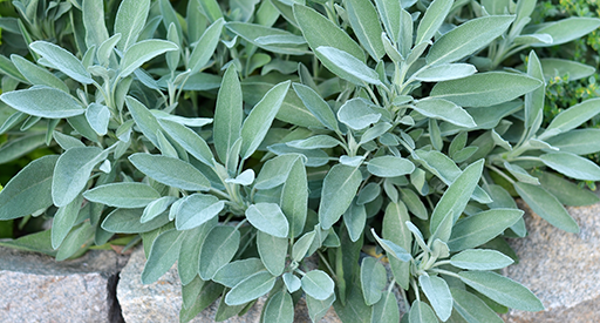
5 Steps to Sage Planting Success
- Choose a sunny spot close to your kitchen for easy access, or for your pots and containers.
- Prepare your soil well by digging in organic matter like compost and sheep pellets.
- Add a layer of herb mix to plant into.
- If your sage is in pots, feed it in spring and summer to promote fresh growth.
- Water your sage consistently in summer and pick regularly to encourage sweet new growth.
Follow our full guide below to a bumper crop of homegrown sage.
Hardy and robust, sage can be harvested all year round. It's a chicken stuffing staple, but is also a must-have for soups, stews and roasts and a perfect pairing for pumpkin!
Regular picking will encourage the sweet new leaves to emerge, while the older leaves pack a punch with more intense flavour and can be used sparingly.
Prepare
Happy in pots, containers, or in the garden, sage is a low-maintenance herb. It loves regular watering in summer but will cope with dry periods.
Refer to our Planting Calendar for when to plant sage in your region.
Popular types of sage include:
- Common: an aromatic herb with grey-green leaves which works well in many dishes.
- Golden: a pretty addition to the garden, it is very similar to common sage but with green and gold variegated leaves.
- Pineapple: a tall, attractive plant with pretty red flowers and edible leaves that really do smell like pineapple!
- Purple: an ornamental herb whose leaves have a rich sage flavour, and can be slightly bitter. It's not used as widely in cooking as other types.
Like building a house a good foundation is the key to success in your garden. The better the soil, the better your plants will grow. Sage enjoys a warm, sunny spot in well-drained soil - it hates sitting in wet or damp soil.
If you are starting with an existing garden bed dig in organic matter like Tui Organic Sheep Pellets and compost to your soil. Then you can add a layer of Tui Herb Mix, a free draining planting mix, rich in nitrogen to promote green, leafy growth and continuous harvesting.
If planting in pots and containers, fill these with Tui Herb Mix.
Plant
Sage will grow quickly and easily from seedlings or cuttings taken in summer, but can also be sown from seeds in spring.
The best times to plant are early in the morning or late in the day, so the plants aren’t exposed to the hot sun straight away.
Planting in garden beds
- Soak seedlings in a bucket of Tui Organic Seaweed Plant Tonic and allow to drain. This will help prevent transplant shock and give your plant a healthy boost.
- Add a layer of Tui Herb Mix to the planting area.
- Dig a hole, approximately twice the size of the root ball of your plant.
- Gently loosen the root ball of your plant and position the plant in the centre of the hole.
- Fill in with Tui Herb Mix.
- Press soil gently around the base of the plant.
- Water your plant well and continue to water regularly while it's young and in summer.
Planting in pots and containers
- If your container has no drainage holes, add stones to the bottom of the container to act as drainage.
- Soak your seedlings in a bucket of Tui Organic Seaweed Plant Tonic before planting and allow to drain. This will help prevent transplant shock and give your herbs a healthy start.
- Half fill your container with Tui Herb Mix.
- Gently take the plant from the current container, loosen the root ball and remove any loose or dead plant material and roots.
- Position the plant in the centre of the new container and fill with Tui Herb Mix up to 3cm from the top.
- Gently firm mix around the base of the plant. The mix should be at the same level on the plant as it was in the previous container.
- Water your plant well and continue to water regularly while it's young and in summer.
Nourish
Feed your herb and they will feed you. Plants use nutrients from the soil as they grow, so replenishing the nutrients ensures they grow to their full potential.
Feed your sage with Tui NovaTec Premium fertiliser in spring and autumn. Regular feeding and applications of Tui Organic Seaweed Plant Tonic will help keep your sage healthy as it grows.
For supercharged feeding with quick visible results try Tui Vege & Herb Liquid Superfood.
Well watered, well nourished herbs will have a better chance of keeping insect pests and diseases at bay.
Keep your picked sage fresh for a few days by putting it in a glass of water or in an airtight container in the fridge. In winter you can hang it in a dry dark place and use it as you need. Sage can grow up to 80cm if you let it! Harvest your sage regularly to keep it your preferred size.